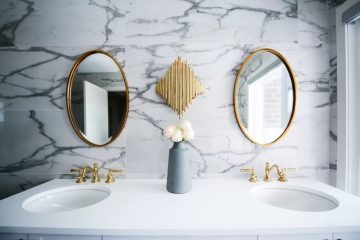As the saying goes, “You can’t make a silk purse out of a sow’s ear”—now or ever?
It’s like coming into a living room that is an empty canvas, it will be flat and non-inspiring. Now, picture that same room all covered in texture and color with beautiful modern living room furniture to create depth, pulling you towards it so that when someone enters, they find a beautifully arranged space permitting ease for anyone who wants to reside or spend quality time. It needs time to remodel, right—yes, this is not magic we are talking about, but instead, it’s layering furniture. Much like how a chef layers flavors, you can twist and layer furniture and accessories, turning your living room into a happy, spatial, and complex autumn space.
But how do you start? How do you go about using the autumn color palette to create a living room that feels as lush and natural as a Canadian maple forest in fall? If you’re inspired to layer furniture in your home, read on as we dive into the art of it, with tips and tricks to combine materials, patterns, and different heights to make a truly unique space!
Furniture layering is the secret sauce of interior design
You know when you enter a room and think to yourself, “Damn, this space just vibes”? Good design is magic, and much of that sorcery comes from layering. Furniture layering isn’t just about placing items in a room; it’s like creating a visual symphony where each piece has its note to play.
Your living room is a canvas, and each piece of furniture in it represents one stroke. A sofa here, a chair there, with a coffee table in the middle—by themselves, they are just items. Interiors become more interesting, restful, and less sterile when layered—adding throw pillows, rugs, lamps, and wall art together creates depth, a sense of history, and, most importantly, a space that looks lived in or loved.
Texture – Not just a pretty face
OK, hear me out for a second…Let’s get tactile. Picture a soft velvet pillow, coarse grain of a wooden coffee table, or cold smooth marble countertop and close your eyes. Random sensations? Sure no, these are textures that give your living room depth. By layering textures, you give your room a 3D feel that can’t be accomplished with plain, boring flat surfaces.
The challenge is: how do you blend textures without making your living room look like a thrift store sale? The key is to strike a balance between rough and smooth, hard vs. soft, shine/shimmer vs. matte. Think leather sofa with a chunky knit throw blanket, or a glass coffee table with a stack of adventure-worn books. It’s this contrast of elements that gives depth and excitement to a room: lush velvet that’s utterly inviting.
Depth in design through heights and layers
If you’re looking for ways to make your decorating projects flow more smoothly, good balance is key. It’s no accident; everything is about depth and having different height sceneries throughout your furniture and décor. Imagine: a low sofa, a medium-height coffee table, or cumbersome curtains. The bottom horizontal piece extends further than each of the three vertical ones, creating a stair-step effect that leads your line of vision upward in a waterfall style.
Now, add some floor lamps, a tall bookshelf, and plants here and there. Instead of your living room being a mishmash collection of furniture, it feels both established and expansive. The trick is to avoid putting everything at the same level. Instead, consider how you can add height and visual stimulation.
You can also hang a piece of art lower than normal to give more weight to something in the middle or layer several throw pillows on the floor for a laid-back vibe. The key is in building layers that complement each other to create a cohesive picture.
Real-world examples: Lessons from other sectors
While it may be hard to believe, the practice of layering is not solely a term used by interior designers—it extends into different trades. Take fashion, for example. Does anyone else realize how a properly styled outfit isn’t just about clothes, but also about layering them? While a simple tee may be perfectly fine by itself, wearing it with a jacket and/or scarf immediately elevates the outfit to be worn almost anywhere!
Or think about cooking. A chef doesn’t put ingredients together aimlessly. In the right hands, herbs and spices are layers they add flavor to at just the correct moment, leading you through complexity toward fulfillment. Similarly, just like textures allow you to layer furniture in your living room, layering isn’t about surrounding yourself with objects for the sake of it; rather, it’s a consideration on levels so that pieces play off each other and create depth.
And landscaping! A well-thought-out garden isn’t just a few flowers planted here and there. Instead, you mix plants of various heights, colors, and textures to create a living, discreet landscape. Use the same concept for your living room design—layer multiple elements to create a vibrant and rich space.
Personality: Explored through the way you layer
Here’s a little secret—the final product should reflect you. Your living room should be the one place where you can be yourself, and layering is a great way to show that. Are you a fan of bold colors? Add some bold cushions or a statement rug. Love vintage finds? Use some vintage pieces among your modern furniture.
Right layering allows you to create not just a beautiful space, but a personal one—a space with your heart juxtaposed. And the best part—there are no rules. Whether it’s combining patterns, mixing styles, or playing with textures, layering gives you the freedom to design a living room as unique and individualistic as you.
“A House is made of bricks and beams; A home is built with hopes and dreams.” – Ralph Waldo Emerson
Some practical tips for layering in the living room
Ready to start layering? Here are some actionable tips to help you get started:
- The Essentials First: Start with the main furniture items—sofas, rugs, and coffee tables. These are the base of your room and will provide a layer.
- Layer Textures: After you have your basics, begin to layer textures. Coordinate textures by adding leather armchairs mixed with wool for softness or placing glass vases on wooden side tables.
- Mix It Up: Pair different patterns but maintain balance. If using a rug with interesting patterns, try to minimize conflict by adding more subdued throw pillows or curtains.
- Different Heights: Adding various heights to your furniture and decor will bring dimension to the room. Mix it up with tall lamps, short stacks of books, and mid-height potted plants.
- Play Your Accessories Right: Finally, accessories are the last layer that completes the look. Pick things that are sentimental to you, whether it’s a set of vintage postcards or your favorite handwoven basket. These personal touches give your living room its charm and character.
Picture your ideal lounge: A space layered with love
So, when you next consider redecorating, don’t settle for flat—create aloud. Embrace the art of layering and design a living room as vibrant and full of life as you are. After all, it all comes down to the details—or, in this case, the layers.



